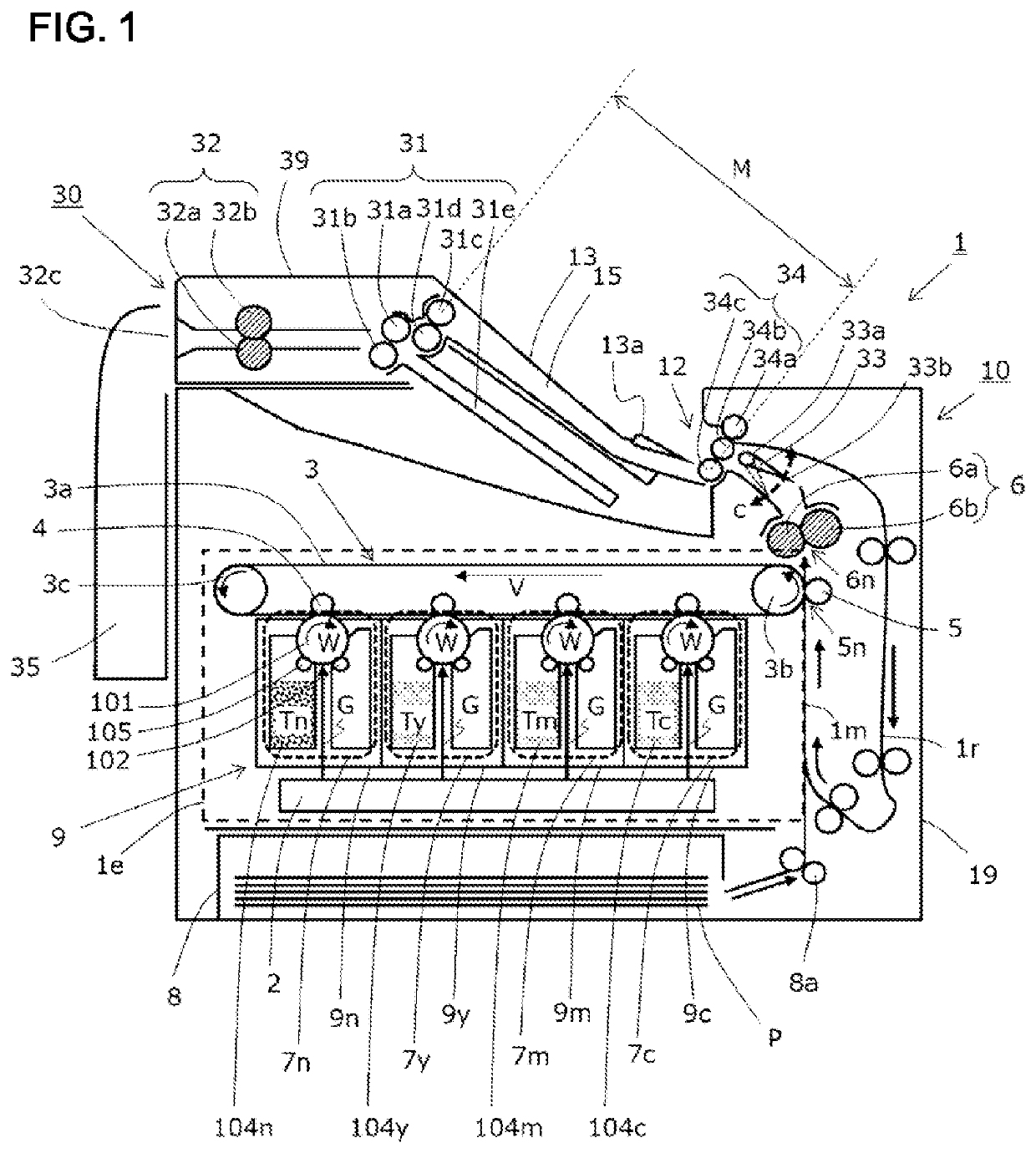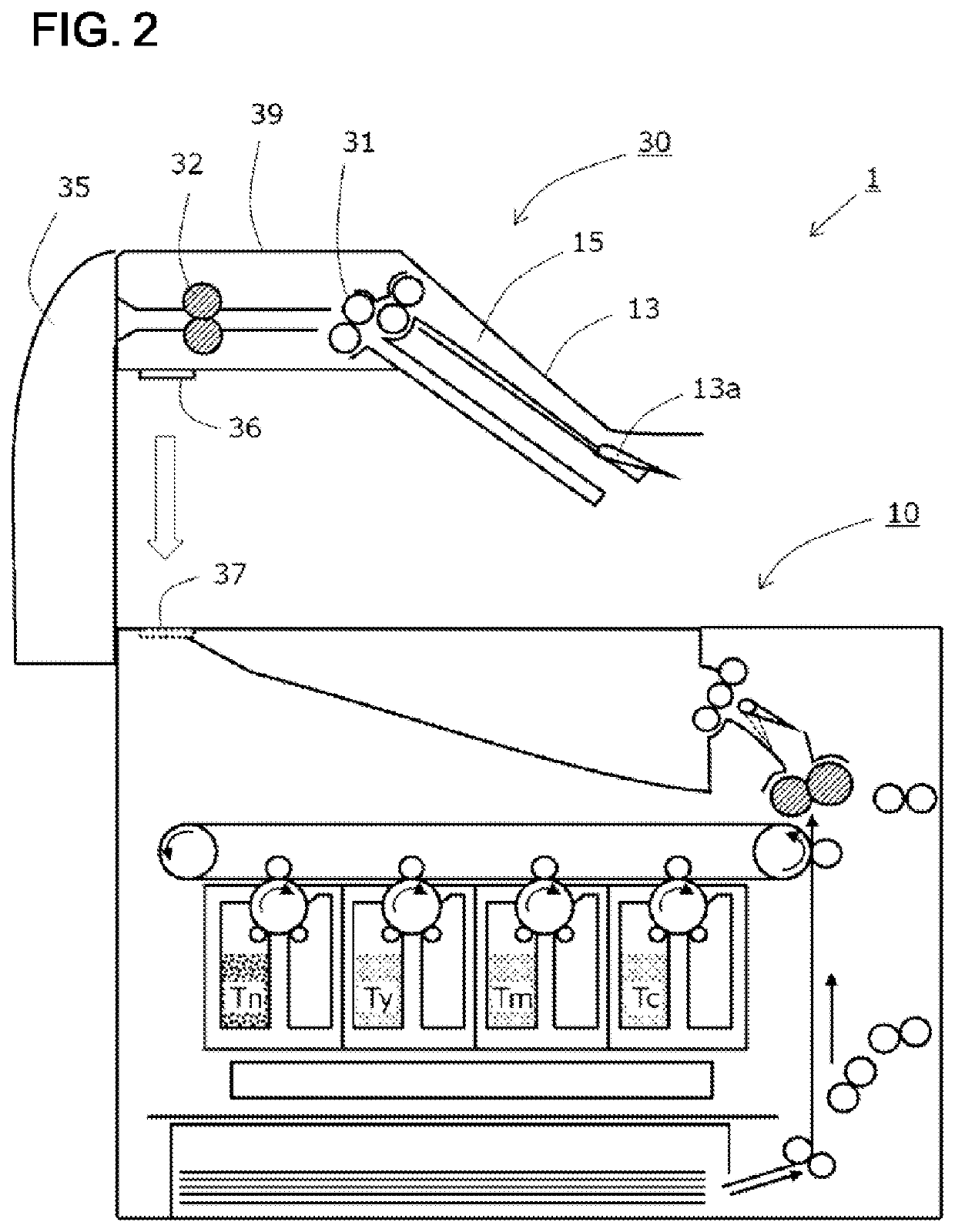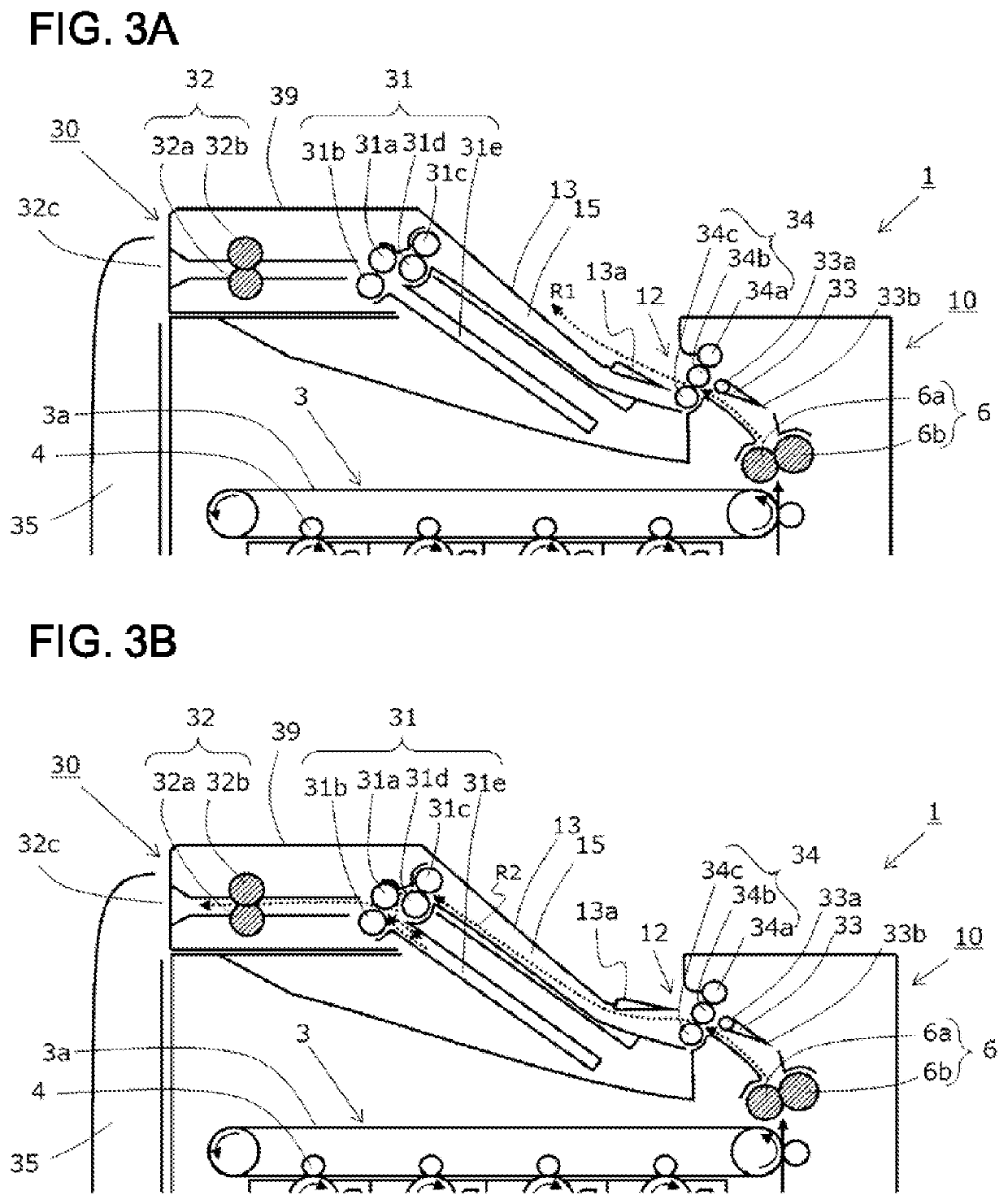Hot-melt adhesive and method for producing bonded article
a technology of hot-melt adhesive and bonded article, which is applied in the direction of hydrocarbon polymer adhesives, lamination, electromagnetography, etc., can solve the problems of time-consuming, time-consuming, and unintentional damage of the adhesion
- Summary
- Abstract
- Description
- Claims
- Application Information
AI Technical Summary
Benefits of technology
Problems solved by technology
Method used
Image
Examples
example 1
[0258]Hot-melt adhesive 1 was evaluated using the following evaluation procedures. The evaluations were all performed in a normal-temperature, normal-humidity environment (25° C., 50% RH), and GFC-081 (81.0 g / m2) (Canon Marketing Japan Inc.) was used as the paper.
[0259]Evaluation of Adhesive Strength
Preparation of a Sample for Evaluation
[0260]A commercially available Canon laser beam printer LBP712Ci was used to prepare a sample for evaluation. By changing the software, the printer was modified so that it could work even if all the cartridges were not set. In addition, the laid-on level of hot-melt adhesive and the toner (mg / cm2) could be adjusted arbitrarily. The toner contained in the black cartridge of LBP712Ci was extracted, and the cartridge was filled with 150 g of hot-melt adhesive 1 and set in the black station.
[0261]Using this printer, as illustrated in FIG. 8, the powder adhesive was printed at a laid-on level of 0.5 mg / cm2 on a 4 cm area by opening a margin of 8 cm, and t...
PUM
| Property | Measurement | Unit |
|---|---|---|
| temperature | aaaaa | aaaaa |
| viscosity | aaaaa | aaaaa |
| freezing point | aaaaa | aaaaa |
Abstract
Description
Claims
Application Information
 Login to View More
Login to View More - R&D
- Intellectual Property
- Life Sciences
- Materials
- Tech Scout
- Unparalleled Data Quality
- Higher Quality Content
- 60% Fewer Hallucinations
Browse by: Latest US Patents, China's latest patents, Technical Efficacy Thesaurus, Application Domain, Technology Topic, Popular Technical Reports.
© 2025 PatSnap. All rights reserved.Legal|Privacy policy|Modern Slavery Act Transparency Statement|Sitemap|About US| Contact US: help@patsnap.com



